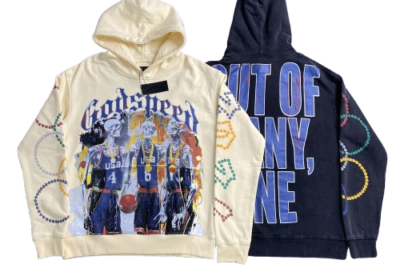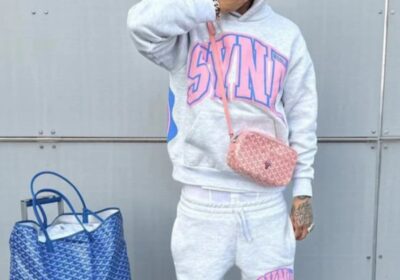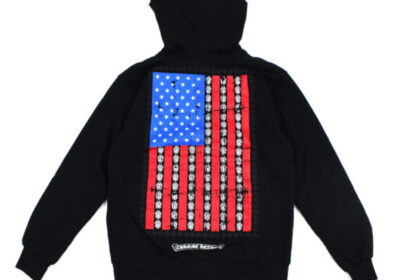When it comes to finding the perfect hoodie, style and fit usually steal the spotlight—but behind every great hoodie is one core factor that really makes or breaks it: fabric quality. The material of your hoodie affects everything from how comfortable it feels Essential Hoodies on your skin to how long it lasts, how warm it keeps you, and how it holds up after multiple washes. If you’ve ever bought a hoodie that pilled too soon, shrunk in the wash, or lost its shape, then you already know how critical fabric quality really is.Let’s break down the key elements of hoodie fabric quality, the most common materials used, and how to tell whether you’re investing in something that will truly stand the test of time.
1. Understanding Fabric Weight and GSM
One of the first indicators of quality in a hoodie is its fabric weight, often measured in GSM (grams per square meter). This number gives you an idea of how thick and durable the fabric is.
-
Lightweight hoodies (150–250 GSM): Ideal for layering or wearing in warmer climates. They tend to be more breathable but less warm.
-
Midweight hoodies (250–350 GSM): These strike a balance between warmth and breathability. Great for daily wear in moderate climates.
-
Heavyweight hoodies (350+ GSM): Often used in premium or winter-ready hoodies. These offer superior warmth, structure, and durability.
While heavier doesn’t always mean better, a high GSM typically points to a more substantial, long-lasting hoodie.
2. Cotton: The Gold Standard
100% cotton is often considered the go-to for hoodie lovers. Why? Because it’s:
-
Soft and breathable: Perfect for everyday comfort.
-
Natural and hypoallergenic: Ideal for sensitive skin.
-
Durable: High-quality cotton ages well when cared for properly.
However, not all cotton is created equal. The quality can vary based on:
-
Staple length: Long-staple cotton (like Pima or Egyptian) is smoother, softer, and more durable.
-
Combing: Combed cotton has had impurities removed, making it softer and less likely to pill.
-
Pre-shrinking: Pre-shrunk cotton reduces the risk of unexpected shrinkage after washing.
If you’re after something plush, look for brushed cotton or fleece-backed cotton—these add warmth and a cozy feel on the inside.
3. Cotton-Blend Fabrics: Comfort Meets Performance
While 100% cotton hoodies are cozy and breathable, they can shrink or stretch out over time. That’s where cotton-blend fabrics come in. The most popular blend? Cotton and polyester.
-
Cotton-poly blends combine the softness of cotton with the durability and wrinkle-resistance of polyester.
-
They’re less likely to shrink, dry faster, and generally last longer through repeated washes.
-
Many athletic or streetwear brands use blends to offer that ideal mix of comfort and performance.
A common ratio is 80/20 (cotton/polyester), though some blends go 60/40 or even 50/50 depending on the desired effect.
4. Fleece and Brushed Interiors
If warmth and comfort are top priorities, look for hoodies with a fleece lining or a brushed interior. These processes create a soft, plush layer inside the hoodie, trapping heat and adding to the cozy factor.
-
French terry is a lighter loopback fabric often found in spring/summer hoodies. It’s breathable and moisture-wicking.
-
Fleece (especially cotton or poly-fleece) is warmer and often used in fall/winter hoodies. It can be lightweight or heavyweight depending on the weave.
Higher-end brands often offer ring-spun fleece, which is smoother, stronger, and resists pilling better than traditional fleece.
5. Specialty Fabrics and Sustainable Options
As the fashion world leans toward more ethical production, many hoodie brands are now offering sustainable fabric choices without sacrificing quality.
-
Organic cotton: Grown without harmful pesticides, organic cotton is better for the planet and your skin.
-
Recycled polyester: Made from plastic bottles or waste fibers, it’s durable and eco-friendly.
-
Bamboo or hemp blends: These natural fibers are breathable, antimicrobial, and biodegradable—plus they add a unique texture.
Though often slightly more expensive, these fabrics are a smart long-term investment for people who care about quality and the environment.
6. Signs of a High-Quality Hoodie Fabric
Even if you can’t memorize every GSM rating or fiber type, you can still identify a quality hoodie by checking for:
-
Smooth, even stitching with no loose threads
-
Weighty but breathable fabric that feels substantial
-
Softness that doesn’t feel synthetic or scratchy
-
Tightly knit fibers that resist pilling
-
Minimal shrinkage after the first wash (read the care tag!)
If a hoodie feels flimsy or stiff right off the shelf, it’s unlikely to improve with time.
Final Thoughts
The fabric quality of a hoodie isn’t just a detail—it’s the foundation. It determines how it feels, how it performs, and how long it lasts. Whether you’re looking for Essentials Tracksuit something cozy to lounge in, something technical for workouts, or something stylish for going out, choosing the right fabric is essential.Don’t just fall for the logo or the color—flip the hoodie inside out, check the weight, feel the softness, and read the label. Because a hoodie that looks good is nice—but a hoodie that feels good every time you wear it? That’s the real win.When it comes to finding the perfect hoodie, style and fit usually steal the spotlight—but behind every great hoodie is one core factor that really makes or breaks it: fabric quality. The material of your hoodie affects everything from how comfortable it feels on your skin to how long it lasts, how warm it keeps you, and how it holds up after multiple washes. If you’ve ever bought a hoodie that pilled too soon, shrunk in the wash, or lost its shape, then you already know how critical fabric quality really is.
Features:
- Essential Hoodies Fabric Quality







Leave feedback about this